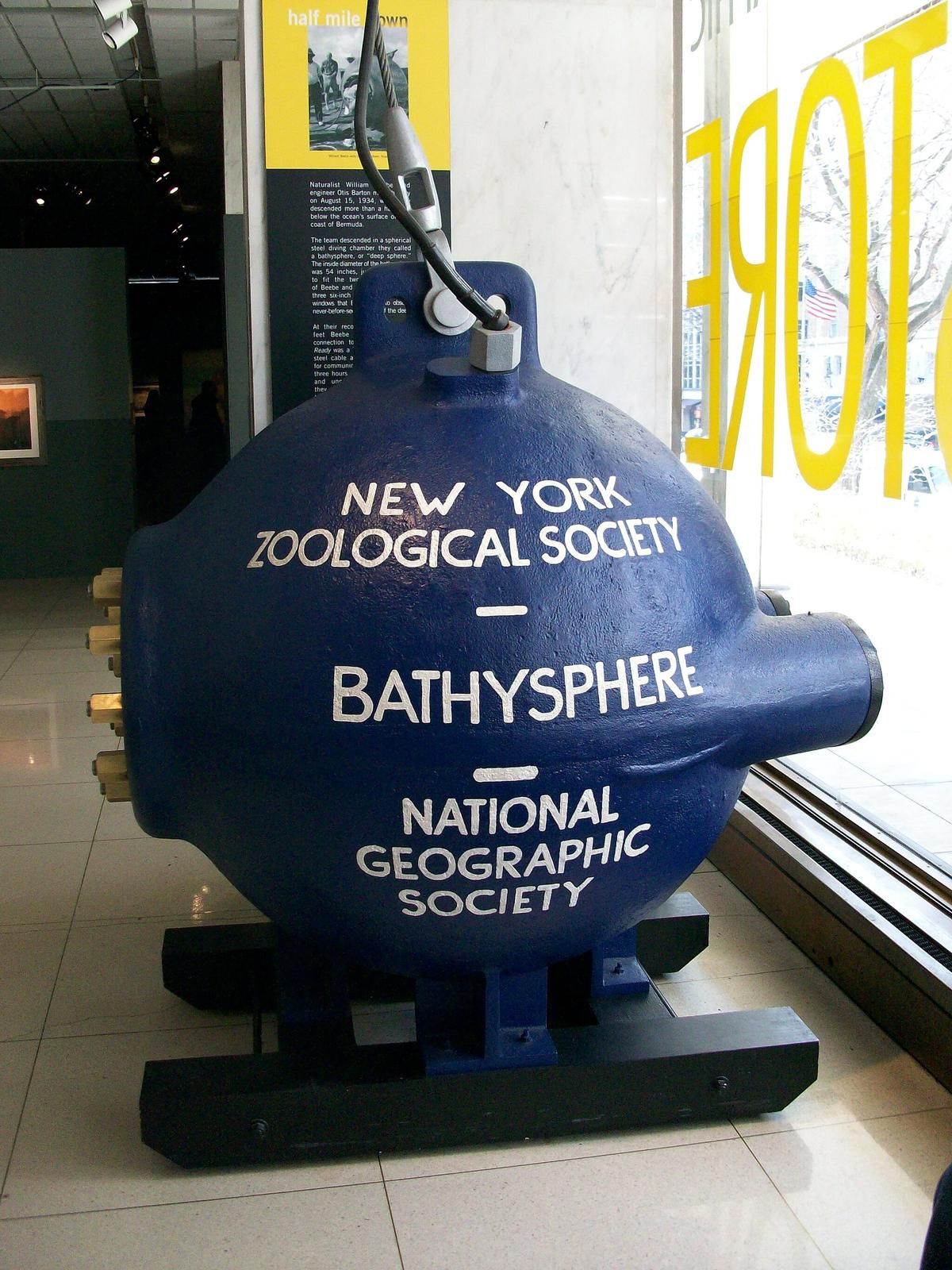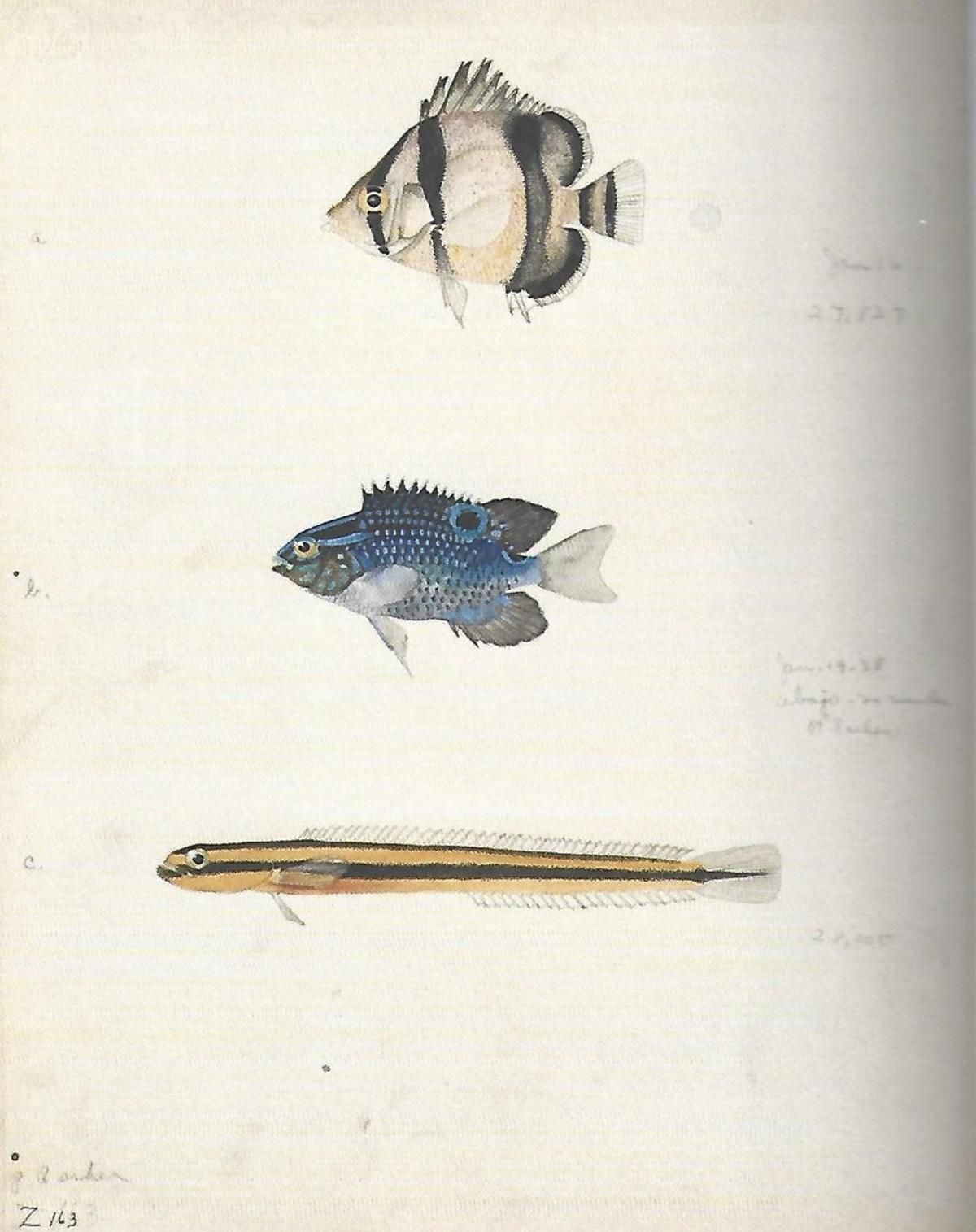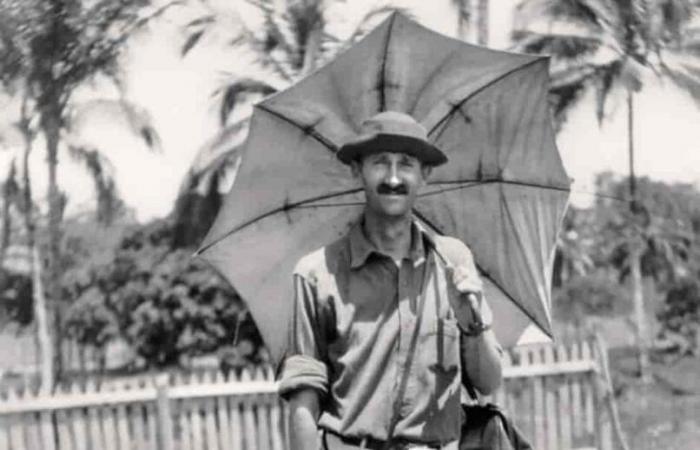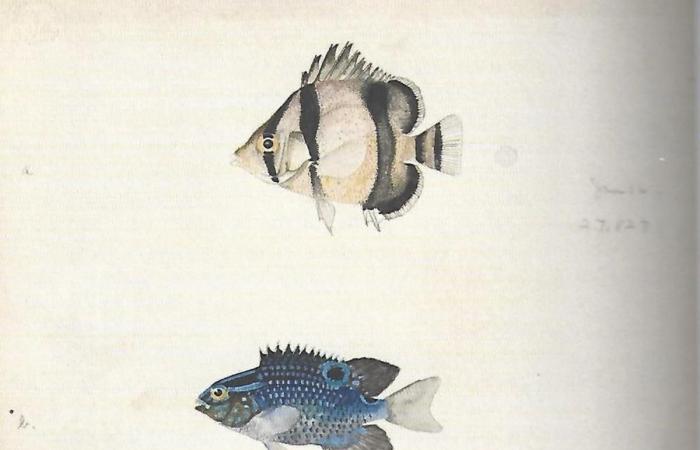“It’s raining sardinellas/ When they are afraid, they turn around/all like a single fish/and melt towards the depths; breathtaking spectacle. » The poetic and incisive extracts from William Beebe’s notebooks punctuate this extraordinary work, which is, if the comparison is possible, above all a cabinet of curiosity. To recount the explorations of this adventurous naturalist of the seabed, Brad Fox brings together a corpus of fragments, stories, anecdotes which together constitute both a chronicle of the American’s observatory dives and, in mirror, a panorama of the scientific history of underwater travel.
The Chiasmodon or great swallower, by Else Boostelmann, 1930.
Else Boostelmann/ Éditions du Sous-Sol
It is fascinating to see how the digressions articulate a global and philosophical vision of this vast and dizzying subject, while bringing out the portrait (thematic and not chronological) of an extraordinary scholar, of an era, the 1930s, incredibly rich in discoveries and sometimes reckless explorations. Everything is carried by an inventive, learned, poetic language. “The Book of the Bathysphere” is truly an unclassifiable object. The author, moreover, is also, by the breadth of the subjects that he treats throughout his stories, articles and novels that he looks at the Islamic traditions of interpretation of dreams, the tales of Lale Müldür or the works of the Persian astronomer Abd al-Rahmān al-Sūfī. When The Book of the Bathysphere was released in the United States, National Geographic republished articles from the 1930s about Beebe’s explorations.
“Flying snails in delicate shells as if made of wet parchment…”
A colorful lexicon
Copepods, leptocephalans, siphonophores, cyclothones… These words become familiar as we journey into the depths of the oceans with Beebe and his team, aboard his bathysphere. A then revolutionary invention designed with Otis Barton to observe deeper and deeper. And store up all kinds of visual sensations stated in an elliptical way: “flying snails in delicate shells as if made of wet parchment”, “fuzzy pilot fish”, “silvery bronze eels”, “a dragon snake with a golden tail”… While noting, in each line, the depth reached, its “emotional and cognitive itch”, its “sense of dimensionality”.
Esther Domian
Brad Fox supported the reissue of the works of William Beebe.
Daring explorer
Beebe’s work takes on a formidable dimension: Brad Fox evokes his thoughts on the nature of the darkness of the seabed, on explosions of color (Beebe draws on Robert Ridgway’s color chart), and bioluminescence. But above all, it highlights the singularities of this scientist who surrounds himself with female colleagues (Gloria Hollister, Else Bostelmann), assuming the risk of being accused of “deprofessionalizing” research.
Mike Cole/ Wikipedia CC-BY
The bathysphere by William Beebe.
We salute his temerity: going down aboard this bathysphere from where we communicate with the boat by a simple acoustic wire. His intuition, the dazzlingness of his observations which he modulates with the movements of his underwater vehicle, ancestor of the bathyscaphe of the Frenchman Auguste Piccard. Hair-raising.
George Alan Swanson, 1938/ Éditions du Sous-Sol
Chaetodon or butterfly fish; damselfish fish; Renulla.
“The Book of the Bathysphere” by Brad Fox, translated by Camille de Chevigny, ed. of the Basement, 320 p., €28.50.










